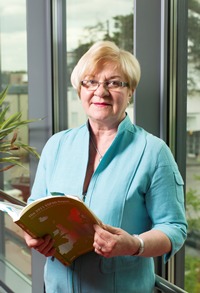Helena Laaksonen
Comparative Data on Adolescent Substance Use in Europe
The European School Survey Project on Alcohol and Other Drugs (ESPAD) collects comparable data on the substance use of young people in as many European countries as possible. The aim is to chart trends in a long period of time and to compare the directions of these trends between countries and groups of countries.
Anyone can view the key results of the survey on the ESPAD website. The Keyresult Generator on the website provides comparable data on the development of eight key variables since the beginning of the project in 1995. The user can create customised graphs by selecting a key variable and then choosing countries to compare, a time period, and whether to enable comparison between boys and girls. The ESPAD averages for each country can also be used in comparisons.
Key variables available on the web service
The key variables that are available for presentation are: alcohol consumption in the last drinking occasion, alcohol use in the previous 30 days, cigarette use in the previous 30 days, heavy episodic drinking in the previous 30 days, lifetime cannabis use, lifetime inhalants use, lifetime illicit drug use other than cannabis, and lifetime tranquilliser or sedative use without prescription.
On the website, there are, in addition to the key variables, international reports on the previous six data collection rounds and brief analyses on each participating country's results. Publication information on national reports, articles and other publications that have referred to the ESPAD data can also be found on the website.
Since 2003, all country datasets have been stored in a common database, access to which can be granted to researchers who have sent an application form. However, the datasets collected in the first two collection rounds (1995 and 1999) are not available. The English questionnaires used in each round are accessible on the website.
More participating countries

Data are collected from 15-16-year-old students every four years. In some countries, older students have also participated in the study, but this is not the case in Finland. The latest results can be examined in the 2011 ESPAD report and the next data collection wave will be conducted in 2015. The number of participating countries has increased in every wave. In 2011, 39 countries participated. Finland has participated in all waves.
Interest in adolescent substance use has grown on other continents, as well. Africa, South America and Asia have all shown interest in the research. "That is why we Finnish researchers, along with the Finnish Blue Ribbon are taking the ESPAD survey concept to Namibia, Africa," says Salme Ahlström, the coordinator of the Finnish ESPAD project."Blue Cross Namibia has managed to get government funding for the project. This is an experiment whose aim is to assess how ESPAD methodology could be applied in developing countries. Last June, two colleagues from Namibia came to Finland to be trained by me and in February I'm going to Namibia to train local data collectors. I'm very happy about and proud of this new opportunity."
ESPAD results interest organisations and researchers
"Preparing the international report is a major undertaking. Thanks to the common data bank, everything is a lot easier these days when the revising is centralised to the Databank Manager. The report is published in all ESPAD countries on the same day, at the same time. Over the years, the published results have always received excellent media coverage. This is important, because data collection is funded nationally in each country and the funders should get their money's worth," Salme Ahlström says. After the publication of the report the work continues as ESPAD researchers begin analysing different topics in more detail.
Ahlström and her colleagues have published numerous articles on the ESPAD data. Students have also used the data in their MA theses. Based on the most recent data from 2011, articles covering other related topics, such as gambling and road accidents will be published in the near future.
According to Ahlström, the ESPAD results have been used in the evaluation of both the EU and WHO alcohol strategies. Organisations often request results in advance, so they are provided with provisional results before the publication of the report. Finnish researchers have also provided the Ministry of Social Affairs and Health of Finland with some provisional data in order to facilitate the drawing up of reports. According to the Swedish coordinator Björn Hibell, researchers outside the ESPAD project have not requested the data quite as much, but he, as well as Ahlström, hopes that the number of applications will increase. "On the other hand, we have got the impression that researchers refer to the ESPAD reports quite a lot," he says.
Application form and terms of use can be found on the project website.